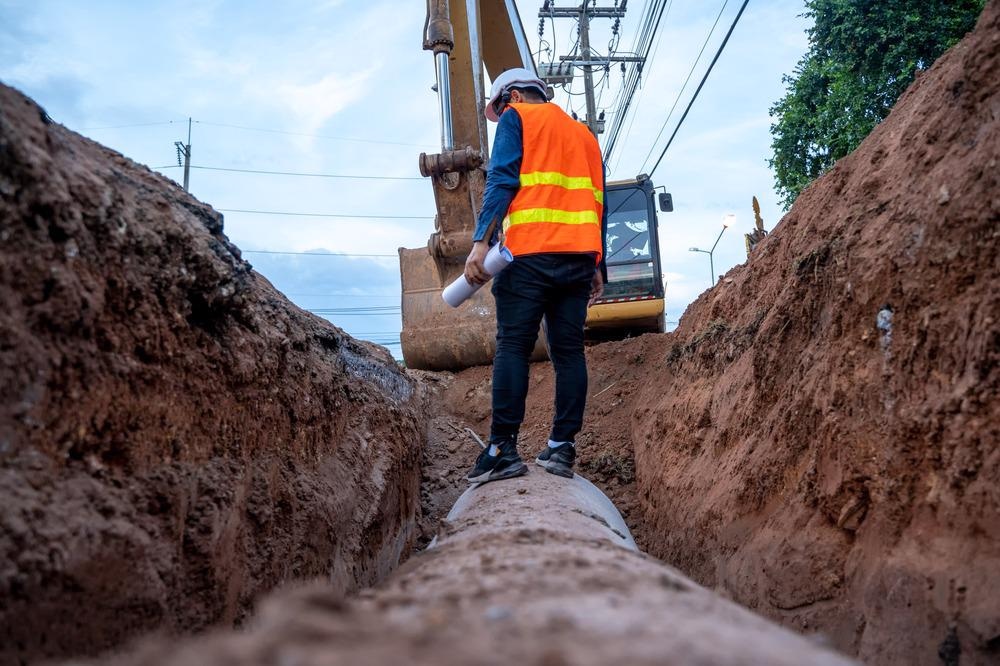A paper recently published in the journal Materials has reviewed the innovative use of recycled materials in civil engineering applications.

Study: Recycled Materials in Civil and Environmental Engineering. Image Credit: M2020/Shutterstock.com
Background
The proper management of waste can ensure a continuous and sustainable supply of energy and materials over the years. Waste management primarily includes all activities of the entire waste managing process, such as reuse, treatment, transport, recycling, and collection of waste materials. These activities reduce the adverse effects of waste on both human health and the environment.
Appropriate management of non-hazardous and hazardous waste generated from industrial and civil operations is a basic requirement to promote a circular economy. Thus, the entire waste cycle must be regulated, starting from production to disposal, with specific attention to recycling and recovery.
In this study, recent innovative studies that demonstrated the use of recycled/secondary raw materials in civil engineering applications were reviewed. All these studies aimed to identify ways to decrease waste generation and optimize the values of recycled materials that can be reused easily for various applications.
Recycled Waste in Civil Engineering
Renewable resources derived from recycling industrial waste, such as ilmenite chlorination furnace slag, water-quenched blast furnace slag, and reclaimed asphalt pavement (RAP) material, were used in another study to produce recycled aggregate (RA) materials for construction and concrete applications.
The influence of mixing and treatment methods on recycled aggregate concretes (RACs) obtained after different techniques was investigated in a study. A statistical study was performed after evaluating the results of compressive strength tests of concretes designed with equivalent mortar volume method (EMV) and absolute volume method (AVM) and containing silica fume (SF), RA, and natural aggregate (NA).
Machine learning (ML) techniques such as bagging regressor, decision tree, and gradient boosting were used by researchers to predict the compressive strength of RACs. Statistical tests and correlation coefficients were performed to assess the performance of the ML methods, while error dispersals and k-fold evaluation were performed to confirm their validity.
Cellulose fibers obtained from recycling waste paper were utilized for producing sustainable cement mortars. The approach represents a technically and economically feasible and eco-friendly way of managing waste generated from indoor applications. Moreover, the produced composites provided healthy living solutions as the cellulose aggregates in the cement regulated the humidity inside buildings.
Previous concrete (PC) prepared using recycled brick aggregates (RBA) were characterized using pore structure distribution analysis and mechanical tests. Additionally, the influence of particle size and replacement ratio on the pore feature and structural performance of the PC was also investigated using image processing and laboratory testing techniques.
Agricultural and industrial by-products, such as wheat straw and end-of-life tire rubber, were utilized as aggregates in a study to produce unconventional cement mortars through an environmentally safe and cheap production process. The synthesized composites were thermally insulating in nature compared to sand-based references.
The addition of another aggregate, perlite, improved the mechanical strengths of the composites without adversely impacting their thermal conductivities. Additionally, composites with wheat straw displayed high acoustic absorption and impact resistance, while the composites with end-of-life tire rubber demonstrated hydrophobic behavior owing to low water absorption. Thus, these composites can be used in non-structural insulating products for indoor applications.
Steel-concrete-steel (SCS) sandwich panels, composed of two high-strength thin steel plates separated by a low-strength and low-density thick concrete core, were investigated by researchers. The core was synthesized using steel fiber concrete (SFC), normal-strength concrete, and recycled coarse aggregate. The study findings showed that the use of SFC in the concrete core improved the ductility ratio and shear strength of the sandwich panels.
The mechanical and physical properties of low-cost and eco-friendly products based on coir fibers were investigated for producing mortars with two different binders. The use of coir fibers improved the cracking behavior of the mortars, while the volume fraction of the binder and fibers enhanced the brittleness of the composite. A lime-cement binder with high coir fiber content showed the highest fracture toughness, which demonstrated the feasibility of using these fibers for cement-air-lime mortars and reinforcing cement.
Auto glowing composites based on high-density polyethylene (HDPE)/ strontium aluminate were synthesized and analyzed in terms of phosphorescence and mechanical characteristics. The study findings demonstrated that the addition of two strontium-aluminate-based fillers extended the afterglow time and improved the mechanical characteristics of the HDPE composites. Thus, these composites can be used effectively in applications such as lamps and roadway nighttime displays.
In another study, soil-cement blocks were produced using waste tire steel fibers (WTSF) and investigated. Three mixtures with 10% Portland cement and 1.5%, 0.75%, and 0% WTSF were synthesized. The highest increase in average compressive strength was observed in soil-cement blocks with 1.5% WTSF. Additionally, all results of the studied samples adhered to the minimum requirements of the various standards considered in the study.
To summarize, recycled materials have demonstrated significant potential in different civil engineering applications. However, more research is required to further expand the application of recycled materials in civil engineering to reduce waste generation.
Disclaimer: The views expressed here are those of the author expressed in their private capacity and do not necessarily represent the views of AZoM.com Limited T/A AZoNetwork the owner and operator of this website. This disclaimer forms part of the Terms and conditions of use of this website.
Source:
Notarnicola, M., Petrella, A. Recycled Materials in Civil and Environmental Engineering. Materials 2022. https://www.mdpi.com/1996-1944/15/11/3955